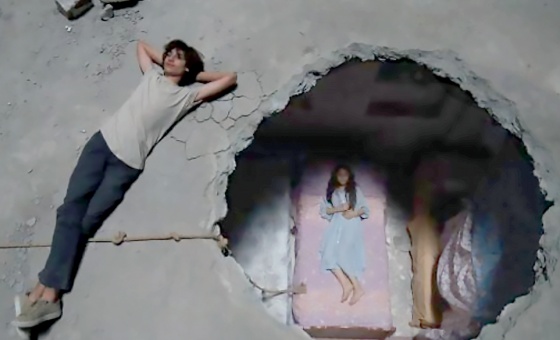This is the last article you can read this month
You can read more article this month
You can read more articles this month
Sorry your limit is up for this month
Reset on:
Please help support the Morning Star by subscribing here
THE text of Richard Overy’s weighty new history of World War II runs close to 900 pages. Follow-up footnote source references add another 75 pages or so. Packed with facts and scholarly analysis, reinforcing his earlier works such as Russia’s War, its insights, clarity and objectivity are formidable.
Most of the first half is given over to the story of the war. Overy views the war, as it advances, from the standpoint of the rulers of the chief countries involved, building into the account their respective dilemmas, decisions, strategies and the reasons for these.
The rest of the book explores successively how resources were mobilised, military realities and developments, the organisation of economies, the justifications advanced for war, civilian resistance and political change sought, the psychiatric impact, war crimes and atrocities and finally, transition into a post-war world in which the Axis powers had failed in their objectives and in which the US was now the world’s most powerful country.
Overy celebrates nothing, noting early on that “the eventual outcome… brought to an end half a millennium of colonialism and supported the consolidation of the nation state,” with “conditions created for a different and more stable world order.”
A central theme, articulated throughout, is the need to view the conflict as between empires and would-be empires, between existing European empires and the ambitions of Nazi Germany, fascist Italy and militarist Japan. The Soviet Union, refreshingly, is not viewed as an empire or would-be empire.
Japan’s war is too often treated as a war only with the US and with Britain, as if its war with China was in the margins — but not in Blood and Ruins.
The war’s commencement is located firmly in 1931, when an incident concocted by Japan was used to justify its occupation of Manchuria, to which the MacDonald government in Britain proved sympathetic.
If Blood and Ruins has a serious rival, it must be Peter Calvocoressi and Guy Wint’s 1972 work Total War. This steered as clear as it could of statistics, making the work highly accessible for the general reader, with the help, in the case of Guy Wint, of luminous references to literary classics.
It splits the war into two, the first part, the European war, authored by Calvocoressi — and the second part, the Asian and Pacific war, by Wint.
Blood and Ruins manages to encompass both wars, which of course overlapped, in a single narrative. Total War is less hesitant about mentioning social class, as the following examples show:
“The propertied classes, underrating the threat of fascism because they compared it with communism, not expecting to be killed by fascists or even to have to surrender too much of their power and property, had no strong objection to helping fascists with their money.”
“The ruling classes of western Europe…were used to ruling not only their own countries but large empires as well…They were acquainted with ‘inferior’ races as well as ‘inferior ‘ classes…In sum the fascist attitude to socialists and Jews was not utterly different from the imperialist attitude to blacks. The difference was one of degree…”
Blood and Ruins, more formal in writing style than Total War, is less mischievous, but goes sharply to the heart of many issues.
The Soviet-German Pact of August 23 1939 is viewed more from the standpoint of Hitler’s Germany than from that of the USSR, while the position of Britain and France about it gets the tart comment: “When the German-Soviet Pact was announced…Chamberlain blustered about ‘Russian treachery’, but he had never been an enthusiast for military collaboration and for neither government did the pact make any difference to their commitment to honour the pledge to Poland if Germany invaded.”
As for the pledge to Poland by Britain and France, Overy goes on coolly: “Neither state had any interest in actively supporting Polish resistance.”
The case for an early “second front” in Europe, following the Nazi invasion of Soviet territory in June 1941, is given short shrift. The Eisenhower plan for “Sledgehammer” (five or 10 divisions across the Channel before winter 1942 followed by 48 divisions in spring 1943), rejected outright by Churchill and his chiefs of staff, is deemed by Overy to be unrealistic.
But in dismissing the first phase of Sledgehammer by pointing to the Dieppe raid of August 1942, he is unconvincing. That attack was conducted by some 6,000 men, around half of a standard division, if that. Many of these landed, a few aboard tanks. Roughly a third got back home.
Horrific casualties were predictable, given the defences in place. Was this affair just a crude, suicidal experiment, or also a demonstration primed to quell the popular demand for an early second front?
Overy registers the suspicions in Washington and Moscow that “British preferences (ie against a second front) betrayed a greater concern with long-term imperial interests than with the task of defeating Germany together.”
But there were and are large grounds for concluding that Churchill and his military, driven by loathing for communism, deliberately left the brunt of the fighting – and the sacrifice – to the people of the Soviet Union, by postponing a second front for as long as possible.
The need for post-war security for that country (whose human losses vastly exceeded those of its former allies), to protect itself against those very allies, became visible.
Overy has no truck with the notion, peddled in past histories with an anti-USSR twist, that when approaching Warsaw in August 1944, Soviet forces could have rescued the nationalist rising there from the disaster it experienced. He lays out the evidence succinctly.
The lead-up to the bombing of Hiroshima and Nagasaki could have benefited in Blood and Ruins from more attention to the evidence of the Hirohito government’s readiness to negotiate surrender, bearing in mind that the US, under President Truman, proved post-surrender to be content to accept the emperor’s retention, albeit in less godlike guise.
I draw attention to a mistaken attribution of support for rape of German women at the war’s end by Soviet soldiers to the hugely influential Jewish Russian journalist and novelist Ilya Ehrenburg, whose Red Star articles on occasion were reprinted in the British press.
I have no reason to doubt that Stalin asked Yugoslav communist Milovan Djilas “what is so awful about his [ie a Soviet soldier’s] having fun with a woman?”
But I question Overy’s reliance on a secondary source quoting Ehrenburg as exhorting: “Break with force the racial arrogance of German women. Take them as the legitimate spoils of war!”
This repeats an old libel and an unlikely tale. Those who have read Ehrenburg’s fiction (such as The Fall of Paris) or his memoir of the war, revealing plainly enough his deeply rooted humanity, would know that he would not have thought or uttered such an atrocious thing.
Joshua Rubinstein’s fine 1996 biography of Ehrenburg (Tangled Loyalties) puts the matter to rights.
Goebbels, he reports, had distributed a pamphlet among German soldiers saying that Ehrenburg was encouraging Soviet soldiers to rape their wives.
Ehrenburg indeed risked arrest by denouncing pillage and rape at the front in lectures to the editorial board of Red Star and to officers in March 1945. He was punished for this by suspension of his articles. A correction to Blood and Ruins is needed.
Total War contrasted the pre-war with the post-war outlook in these terms:
“Before the war the rulers saw their main enemy as Bolshevism, which was a threat to their class rather than to the state. During the war the threat was Nazism, which was hateful to all and Germany… the question for the future was whether, how far and for how long this impetus would be maintained; or how soon an enlarged ruling class would revert to the traditional role of ruling classes to keep things pretty much as they are, to institutionalise, to put a brake on change for fear of putting the skids under themselves.’
Today our ruling class seems to lack much fear. But things change.
Blood and Ruins: The Great Imperial War 1931-45, by Richard Overy, Allen Lane, is out now.










